Best MTB cranks – boost your power on any mountain bike trail
The best MTB cranks have undergone some real changes recently, but how do the classics stack up against the newcomers?
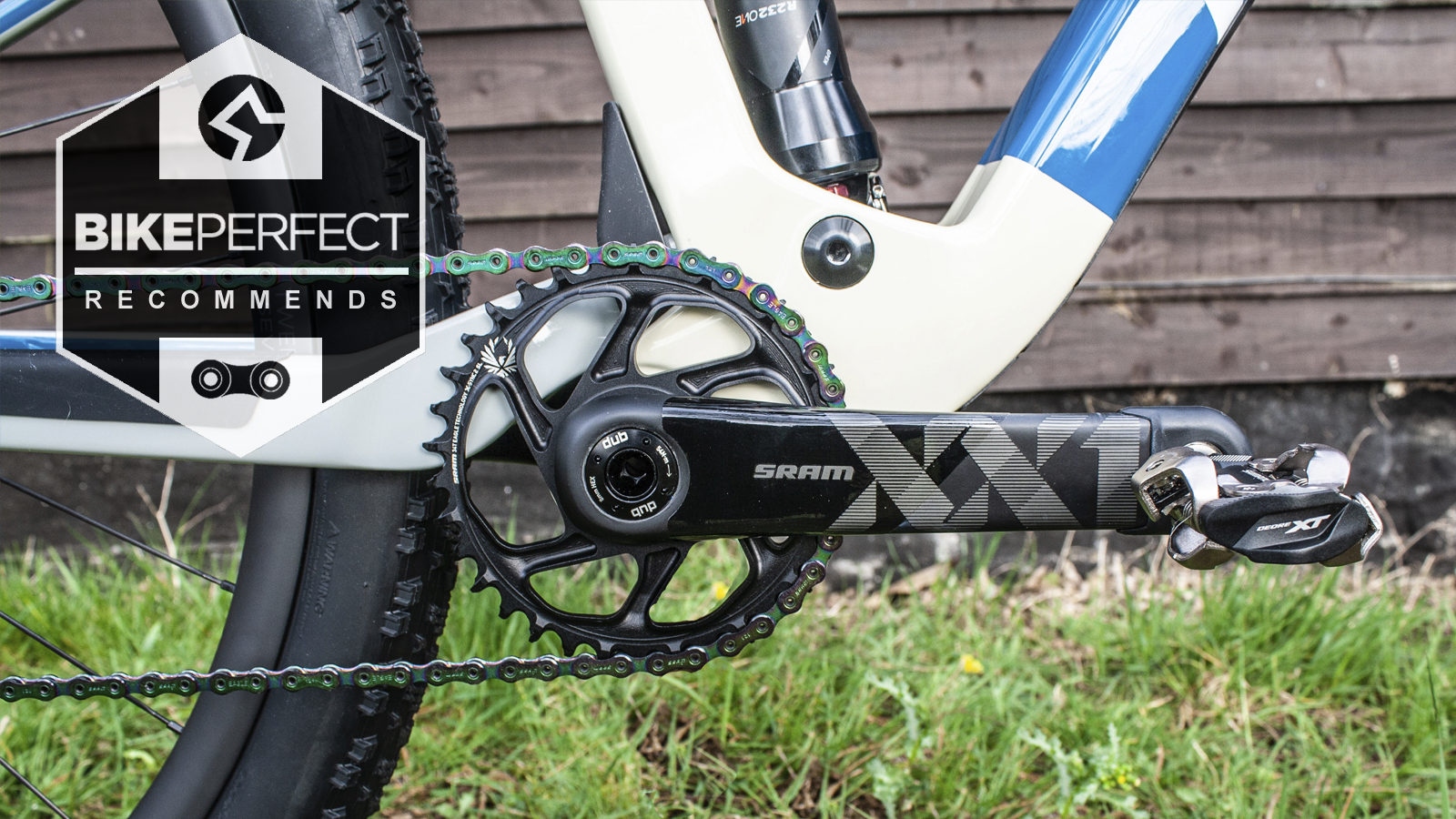
Easily overlooked, yet vitally important, the best MTB cranks transfer human pedal power into the best MTB groupsets to drive you and the bike forward. They need to be strong and stiff to support your weight and must also be lightweight as well so there is a lot of design that goes into these simple-looking components.
The best MTB cranks on this list span price points from just over $100 to $1000, but they all have a couple of things in common. They’re all single-ring units (although a couple can be configured to twin ring if you want), as that’s become the default choice for trail transmissions.
For information on Bike Perfect's testing procedures and how our scoring system works, see our how we test page.
They all use integrated axles attached to one of the crank arms that slide through a pair of separate bottom bracket bearings. We’ve covered a full range of options from super-light, carbon-armed cross-country cranks to units tough enough to survive day-in-day-out abuse on downhill courses, so keep reading for our pick of the best MTB cranks.
Meet the tester
Why trust BikePerfect
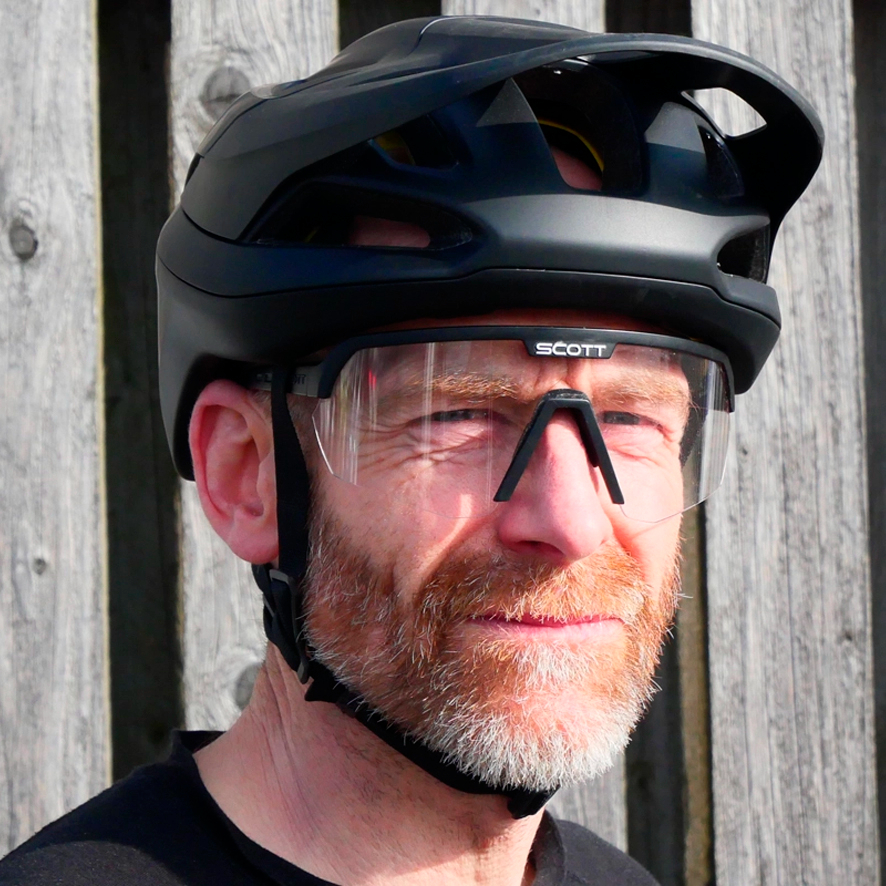
Guy's been testing and writing about mountain bikes for over 30 years. In that time he's tested a vast number of cranks, so knows what makes a good one and what doesn't.
Best MTB cranks

SRAM GX Eagle DUB
Specifications
Reasons to buy
Reasons to avoid
GX Eagle sits in the performance/price sweet spot of SRAM’s extensive crank range. SRAM’s unique X-SYNC 2 ‘double scoop’ chain tooth profile feels smoother and cleaner underfoot than conventional teeth and extends chain life from our anecdotal experience, too. It’s also secure over the roughest ground even when worn or dirty and easily replaceable with a wide range of official 30-34T rings, including elliptical and almost indestructible steel or aftermarket chainrings.
The oversized DUB axle gives universal frame fit and the bearings have proved impressively long-lived in all formats too. The broad, webbed back arms use 7000 series alloy (not 6000 series like most cheaper cranks) to result in a unit that’s proved impressively tough and stiff without adding excess weight. The finish is relatively scrub/scuff proof too. The fact you get a 165mm option for clearance on increasingly common lower bottom bracket height bikes (or shorter legs) is rare in an affordable crank, too.

Shimano SLX M7100
Specifications
Reasons to buy
Reasons to avoid
Shimano's top-three group sets – XTR, XT, and SLX – are all 12-speed and have recently undergone a redesign of the chainring. That means SLX potentially looks to be an even better option than before for price-conscious riders. While it looks like it retains an integrated ring and crank arm design, the four-arm ‘spider’ is actually part of a new direct-mount ring system shared across all the new cranks. The new shape, featuring ‘Hollowtech2’ technology, shaves nearly 70g off the previous SLX. That makes it only 11g heavier than XT and a bit of a no-brainer in terms of value.
The deep arms, chunky spider, and 3D-pocket chainrings mean it still feels solid underfoot, too. It's sticking with a 24mm steel axle (rather than fatter alloy) so there's more room for bigger bearings, which lets you re-use existing Shimano or compatible bottom brackets. SLX is available with 30-34 tooth chainrings, and it’s 12-speed compatible with the same proven narrow-wide tooth profile as before, Shimano even offers double chainrings for those that still holding out against 1X.
The only thing you don’t get with SLX is a narrower Q-Factor (width between pedals) than 172mm. Three different axle lengths (for standard or fatter tire 148mm Boost bikes and then 157mm Super Boost bikes) can make choosing confusing, too.

FSA Afterburner CK Modular
Specifications
Reasons to buy
Reasons to avoid
FSA’s Afterburner has been around for ages but has never really received the attention it deserves as an absolutely bombproof option. Part of that was due to slightly high pricing and some early tooth profile issues but that’s all been sorted, and the latest (V18) versions are fully 12-speed compatible, too. Hollow-forged AL7050 alloy arms and a Chromoly steel spindle are still the heart of its strength and stiffness though.
There’s a massive 28 to 38T range of direct-mount chainring sizes available with different spacer set-ups, allowing you to switch between different frame standards. FSA’s MegaExo bottom brackets generally last well too and come in a full range of frame-compatibility options.
With prices reduced to very reasonable levels, that leaves hefty weight as the only potential issue, but if you tend to punish your cranks, that’s worth sucking up in return for improved longevity.
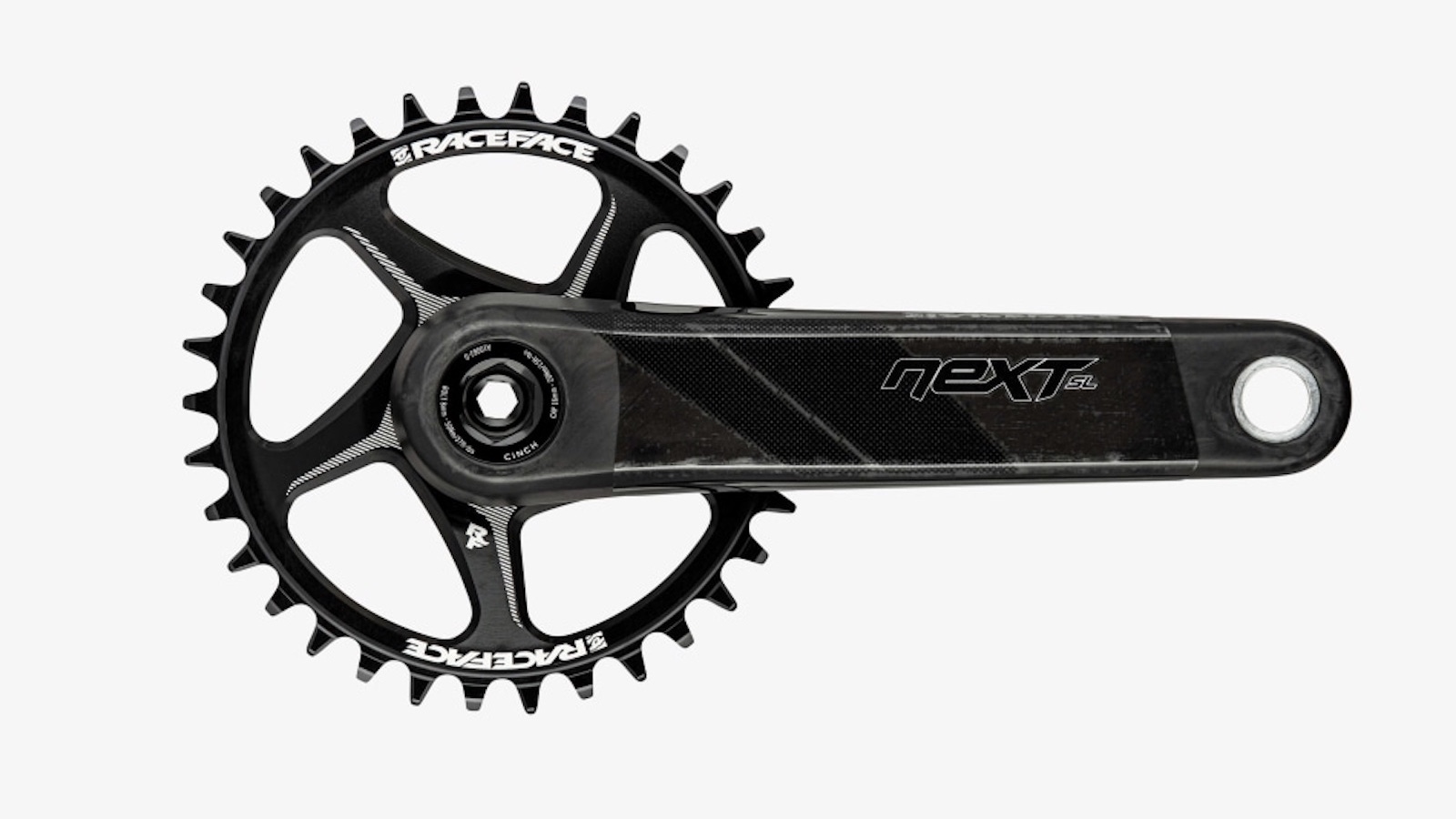
Race Face Next SL G4
Specifications
Reasons to buy
Reasons to avoid
When Race Face introduced its full carbon Next SL crank a few years back, it took us a while to believe something so light could be as tough and stiff as it was. There were a few hiccups with bonding and other issues on early versions of the Canadian-made, US carbon construction, but the fourth-generation versions still weigh nothing while taking pretty much everything in their stride.
The Cinch chainrings work and last well, are available in a vast 24-42T range and you can even opt for a double spider if you want. The Cinch axle comes standard in SuperBoost and even fat-bike widths. If you want to measure your watts there’s a retrofit power meter spindle, too.
Add four color options on the stickers, rubber tip protectors and it looks and lasts as good as it feels under your feet and on the scales. The only gripe in an otherwise perfect lightweight race/trail product is the lack of a shorter 165mm arm option.
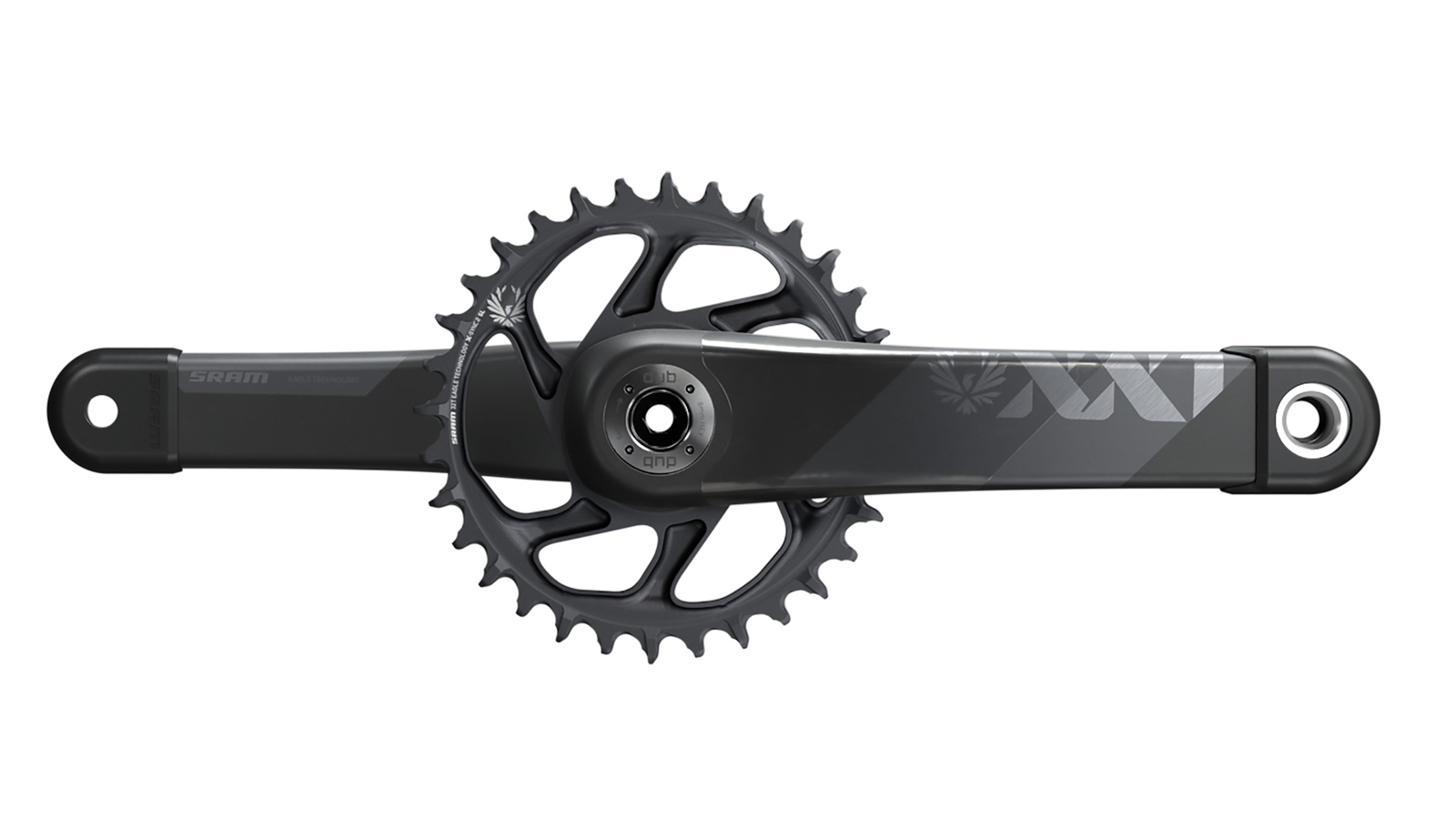
SRAM XX1 Eagle DUB SL
Specifications
Reasons to buy
Reasons to avoid
If we were awarding a prize for the most improved product, then SRAM’s XX1 DUB chainset would be a definite contender. The top-line XX1 has always been light, but previous versions have been noticeably more flexible than competitors. Remodeled ‘carbon tuned’ hollow arms and the new DUB axle and bottom bracket design means XX1 (and other SRAM cranks) now feel rock solid underfoot no matter how hard you’re stomping off the start line.
The double-scoop X-SYNC 2 tooth profile on the direct-mount rings feels smoother and more efficient than standard rings. We’ve been using it long enough to start believing SRAM’s claims that it reduces chain wear, too. 30-38T direct-mount chainring options aren’t as extensive as Race Face but still cater to most users from wattage freaks to low-speed spinners.
XX1 comes in a 165mm arm length for shorter legs or lower-bellied bikes, and DUB bottom brackets are available to fit all bikes. Riders who like rough terrain are probably better off with the slightly heavier but deliberately tougher X01 crank.

Rotor Kapic
Specifications
Reasons to buy
Reasons to avoid
Rotor has always been popular with racers due to its potential power smoothing elliptical chainring tech. The Kapic includes all Rotor's signature non-round ring and adjustable orientation features in their lightest format yet. The straight alloy arms hide extensive internal drilling down their lengths plus externally machined grooves to remove excess weight. Both arms then bolt onto a separate 30mm axle, neatly sandwiching the direct-mount QX1 chainring of your choice into place in the process.
The orientation of the ring can be fine-tuned to modify where it delivers its ovalized power pulse in your pedal stroke - so there's lots to play with. Construction is crisp and immaculate throughout with clear, laser-etched detailing. Rotor does its own range of excellent conventional and ceramic bearing bottom brackets but the Kapic will slide into any 30mm bottom bracket you have, it comes in Boost standard too.
The straight arms mean a longer axle that needs extensive spacing to clear the frame. Add the superlight, carved arms and there’s noticeable flex under peak power so Kapic is probably one for spinners, while pedal mashers should look at the chunkier Rex.
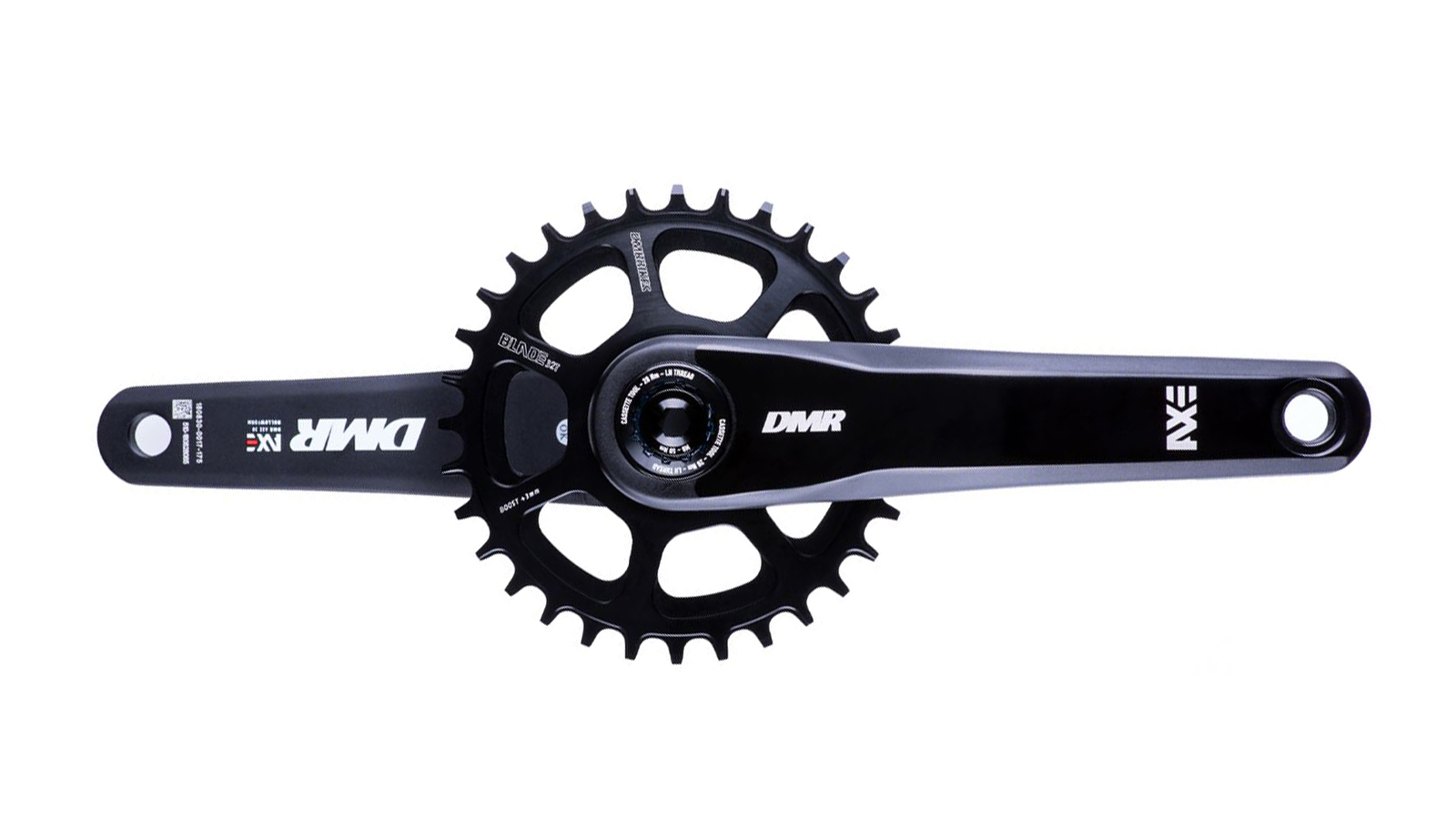
DMR Axe LE crank and Blade chainring
Specifications
Reasons to buy
Reasons to avoid
There’s a high likelihood you’ve never even heard of the crank from the dirt jump and general mountain bike legends DMR. This Praxis-produced unit has been our favorite fail-safe option for left-field builds for several years though, and every set we’ve used is still going strong.
The big arms and oversized axle immediately feel stiffer than most set-ups through the pedals so it’s no surprise they’re used by several top DH riders. They give tons of traction feedback and torque transfer too, although those with sensitive soles might start suffering on long, rocky descents. They also come in shorter 165mm lengths for the latest enduro bikes.
The ‘Blade’ chainrings are available separately in a wide range of sizes, but the three-bolt pattern means you can fit any SRAM-compatible rings you want. The 30/28mm spindle and M30 Praxis bottom-bracket compatibility are a giveaway on the cranks' origin and can present a spares problem if you don’t plan ahead. The Praxis bearings are decent, and they fit any sort of bike (the Press Fit version is particularly clever), so it’s unlikely to be an issue in normal use.
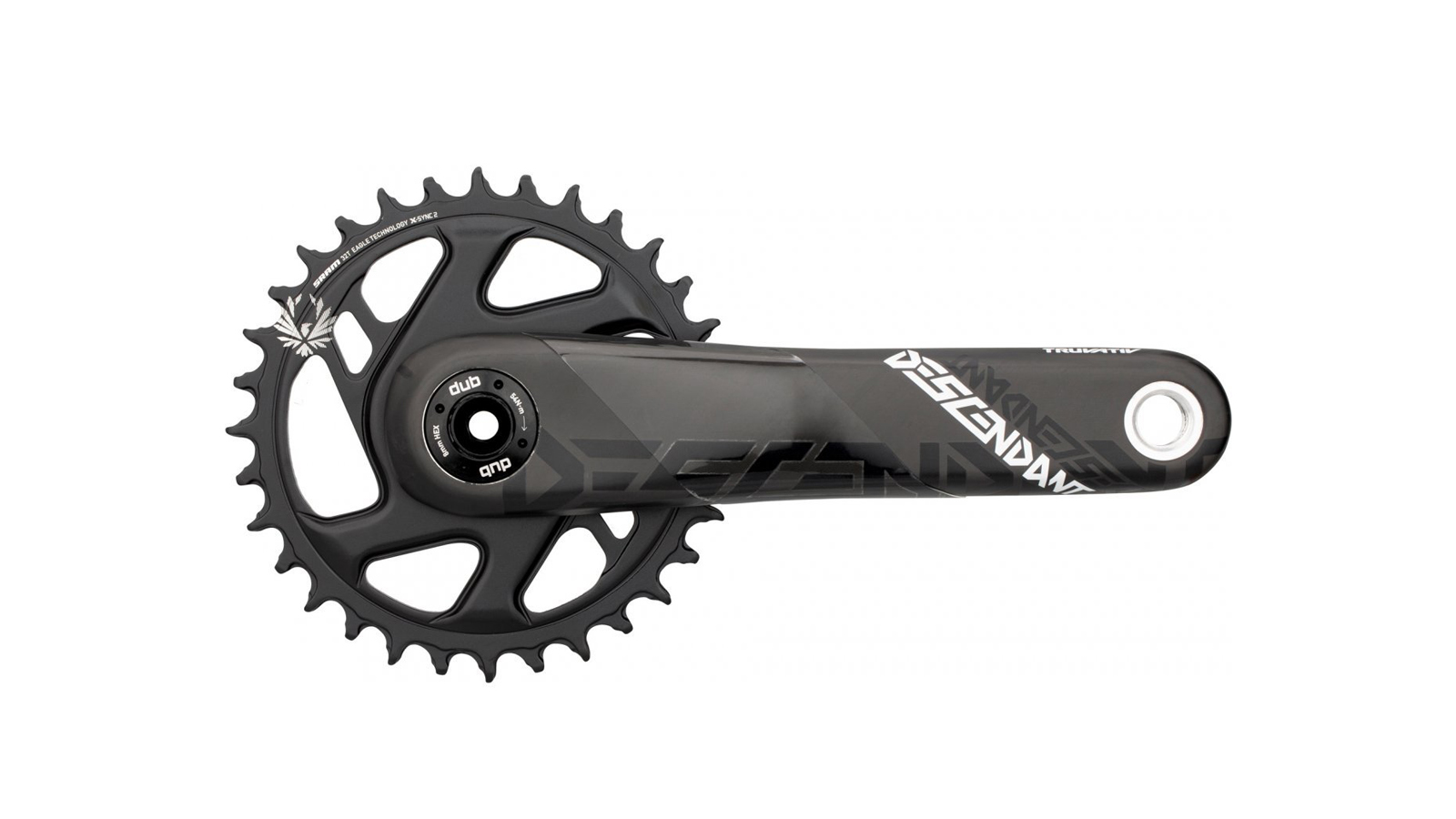
Truvativ Descendant Carbon DUB
Specifications
Reasons to buy
Reasons to avoid
Affordable carbon sounds good and can often be pretty, but it’s rarely the greatest in terms of performance. That makes Truvativ’s great mix of price and purpose even more impressive. The slightly tapered carbon and alloy arms and ‘almost-30mm-but-not-quite-compatible’ DUB axle keep weight usefully low.
They still feel much stiffer in use than an alloy crank of similar weight and price though, and we’ve properly punished several sets without any problem. They’re cosmetically tougher than most alloy cranks as well, and rubber protectors are available if you find yourself scuffing the ends on rocks.
While they only work with SRAM DUB bottom brackets, it’s not really an issue as they’re available in a format to fit any bike, and they’ve proved decently durable over the past year of testing. The X-SYNC 2 rings, with their distinctive double-scoop tooth profile, spread engagement and wear to produce smoother power as well as preserve chains. They’re available in tons of sizes.
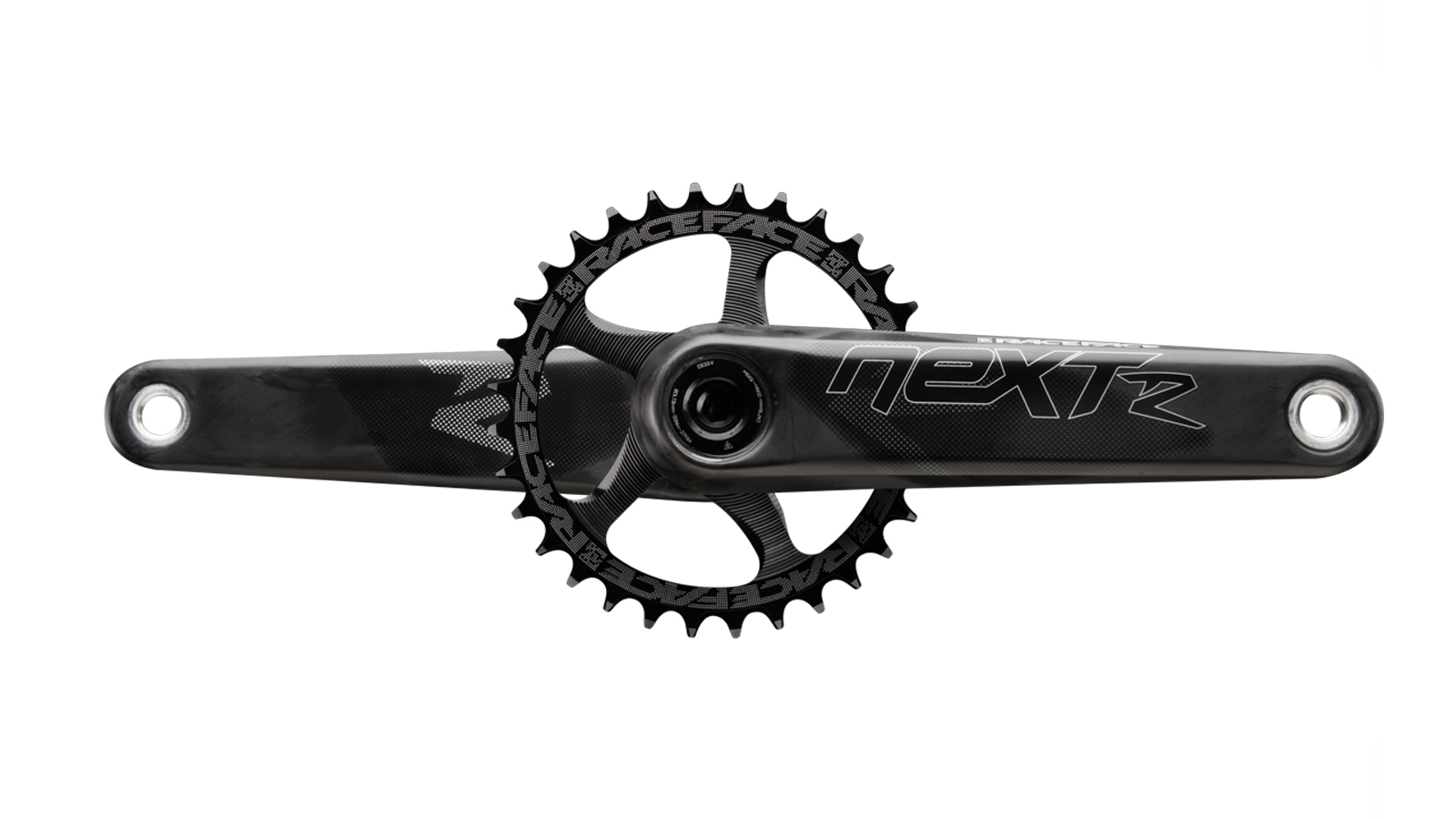
Race Face Next Rally
Specifications
Reasons to buy
Reasons to avoid
If you’re concerned about trusting the Next SL crank, or just want purple and green logo options on a properly tough unit that still comes in under 500g, the Next Rally is where it’s at. The same made-in-Canada, US-sourced carbon construction as the Next SL is beefed up with the pedal insert from Race Face’s SixC cranks to spread impact and landing loads.
The bolt-in Cinch axle system adds easy spindle replacement if you really slam them (we’ve never managed it) and there are width options up to a fat bike. There’s even a neat, totally protected power meter option.
There are tons of direct-mount chainring options too, which leaves the lack of a 165mm option for short legs and low bikes as the only glitch in the Rally matrix. Otherwise, if you’re looking for something that’ll hack a lot of mass out of your bikes but still feel super stiff underfoot and survive Enduro-style abuse, then this is literally Next level if you can afford it.
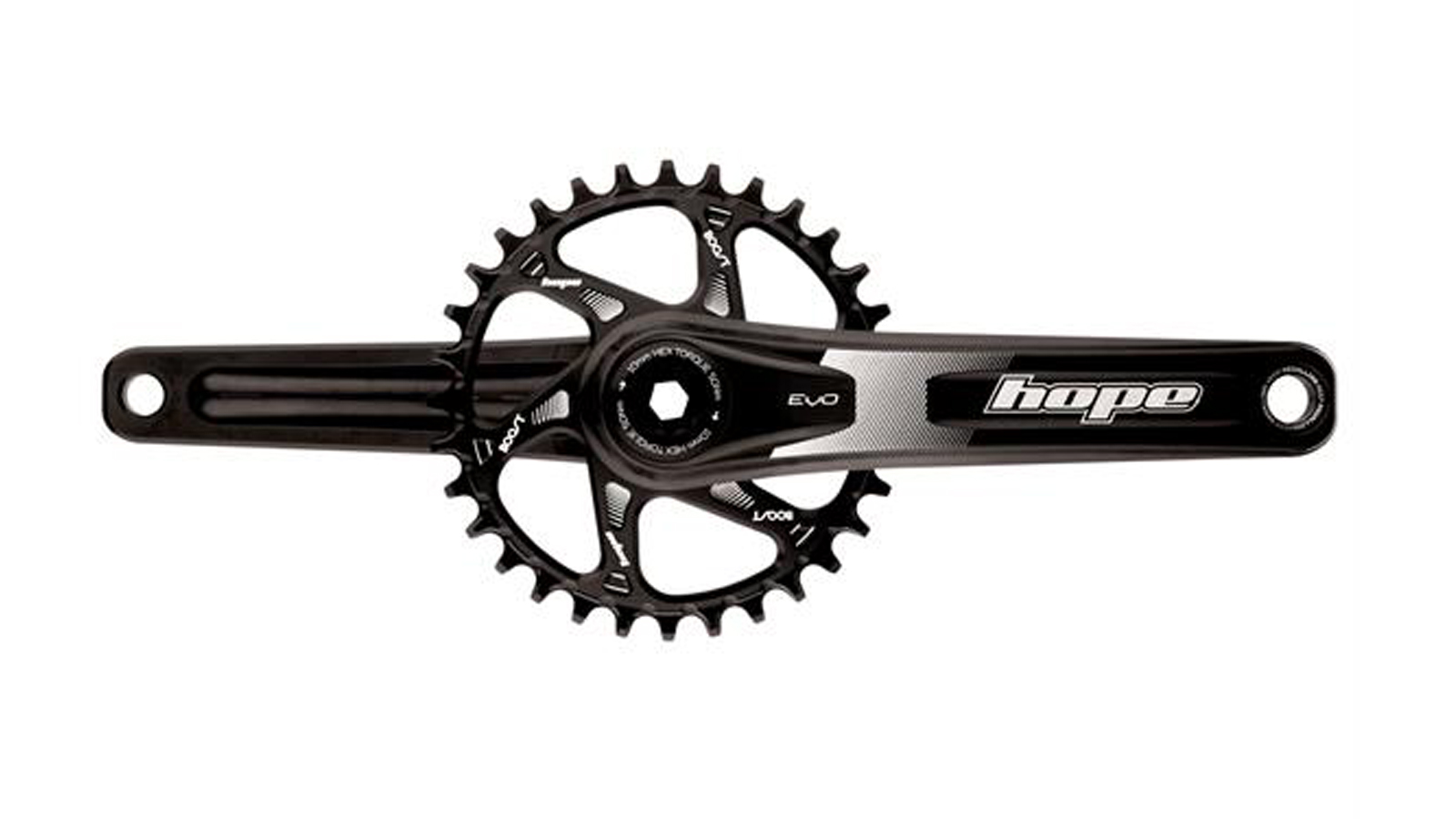
Hope Evo
Specifications
Reasons to buy
Reasons to avoid
Like most things Hope lovingly machines into life in its Lancashire factory, the original laser-etched multi-anodized color option cranks were an instant hit with its legion of loyal fans. They have proved just as tough as Hope's venerable bottom brackets.
Compared with lighter, cheaper alloy cranks they were noticeably flexy when pedaling or cornering hard and the unique tools needed for fit and removal made trail-side maintenance a pain.
Thankfully the new EVO cranks are the result of intense stress-analysis scrutiny to deliver a crank that’s 15 percent lighter and stiffer than the original. It now has self-extracting hardware so you can remove it trailside if the need arises. The same six-color, direct-mount, single or double spider and axle widths from old-school to fat-bike options are also available. Hope’s rings are particularly tough, with extra motorcross-style scoops for squeezing mud out of the mix, too.
As it’s been extensively pre-tested by pro DH rider Adam ‘Gas to Flat’ Brayton, Hope is happy for you to use it for whatever sort of mountain biking you prefer. However, there’s no escaping the fact that Shimano SLX and others compete on basic performance for around half the price.
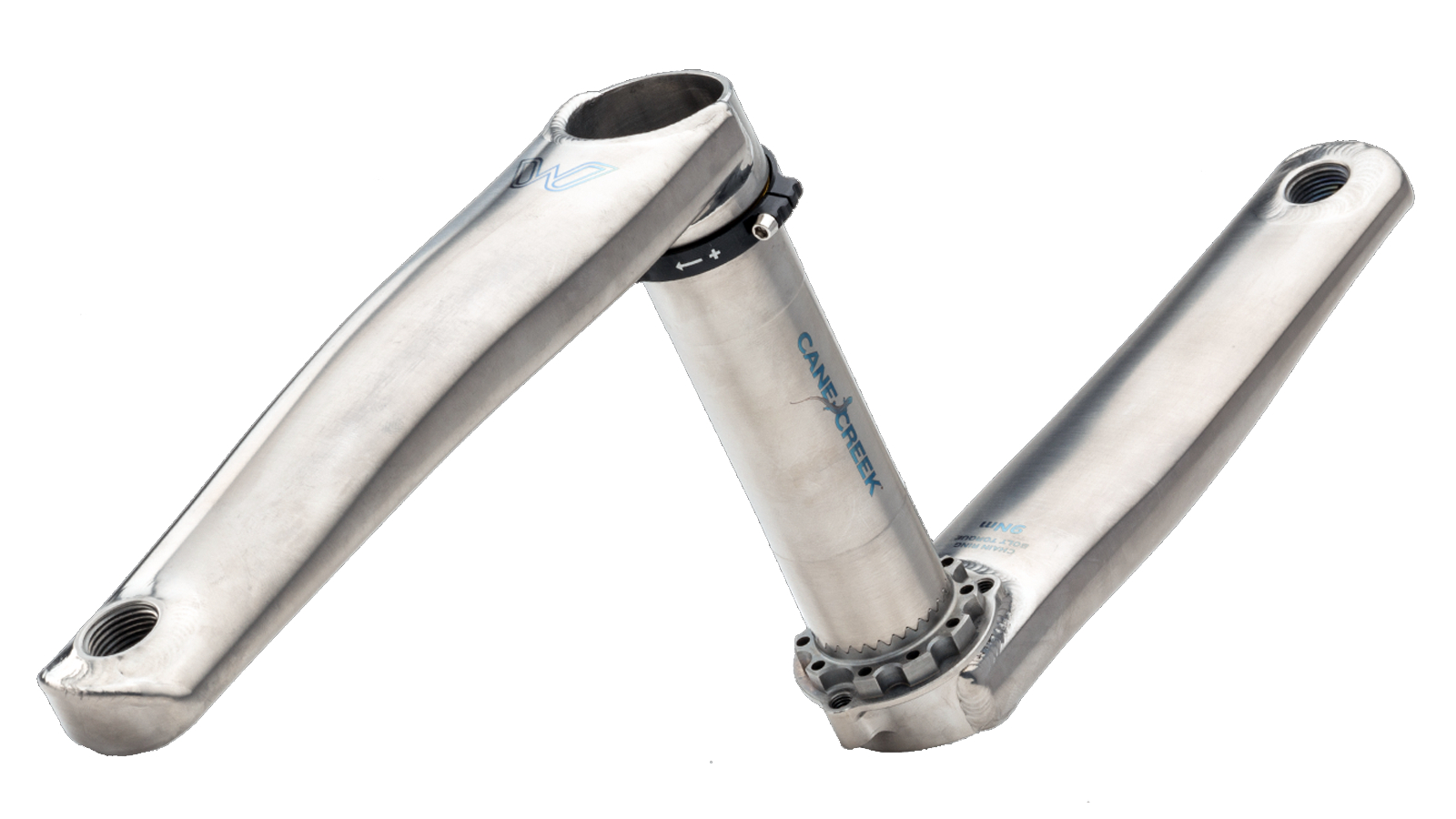
Cane Creek eeWings cranks
Specifications
Reasons to buy
Reasons to avoid
If you are looking for the ultimate finish for your dream bike then it's hard to look past the Cane Creeks eeWings Mountian cranks. Unlike all the other cranksets on this list, which are made from alloy or carbon, the eeWings are crafted from titanium and rated up to enduro riding.
The premium metal is not only considerably more durable than its carbon counterparts but they're also just as light. Cane Creek also makes the claim that the eeWings are 20-30 percent stiffer than comparable competitors. The two-piece design has a stand-out aesthetic that some will love, especially those with a BMX background.
The drive side crank secures with a hirth joint and a stainless steel bolt to the 30mm axle and preloaded with a CNC Machined 7075 T-6 Aluminum adjuster. Cane Creek doesn't offer their own chainrings, instead falling on SRAM's X-SYNC three-bolt direct mount chainring interface.
You can even get a power meter version, although the one-sided Stages Power meter adds considerable extra cost to the already hefty price tag. While the costs are high, Cane Creek does offer a 10-year warranty so at least you know you're covered for a decade of pedaling.
How to choose the best MTB cranks
Is it worth upgrading MTB cranks?
Cranksets are not going to offer as much of a noticeable performance upgrade as you would get if you spent your money on one of the best mountain bike saddles or best mountain bike forks. However, there are some important mechanical gains from upgrading to a set of the best MTB cranks, especially if you have a basic set of cranks.
The best MTB cranks could save a little weight but will likely be the key component to upgrading your bike to other more modern standards. If you have a square taper bottom bracket, a new set of cranks will let you switch to a stiffer and more reliable external bottom bracket (more on that shortly) and allow you to ditch a double chainset in favor of a more secure and simple 1X drivetrain.
Are shorter cranks better?
There are a couple of sizing measurements to keep in mind when looking for the best MTB cranks. First, there is the length of the crank arm. Crank arm length can impact riding style and bike fit, but most riders just run what has come pre-installed on their bike. It's good to keep in mind that longer crank arms run the risk of striking rocks and trail debris with your pedal or crank arm. This rarely damages the parts to the point of disrepair, however, it is not a pleasant experience and can lead to crashes.
How do I know what bottom bracket I need?
Most crank manufacturers use their own bottom bracket design so if you are upgrading to a different brand, it usually means you need to upgrade your bottom bracket as well. There are a few different standards used by frame manufacturers so this will also dictate which bottom bracket you can use and thus, which is the best MTB crank to upgrade to.
The best way to find out what you need is to identify what you currently have fitted to your bike. Alternatively, you can check with your frame manufacturer's tech specs or ask your local bike shop for advice. If you are unsure as to what to look for when checking that a bottom bracket is compatible be sure to read our guide on the best MTB bottom brackets.
What size chainring should I get?
You'll also want to check that the crank arm is compatible with your desired chainring model or brand. Most cranks are compatible with a range of the best 1x chainrings for mountain bikes, so you won't have to go searching too far when looking to replace a worn-down chainring or swap out for a different number of teeth. Those looking for 2x may need to look a little harder as double front rings have fallen out of favor.
The main compatibility consideration is how the chainring is mounted to the crank with brands using either a measurement called BCD (Bolt Circle Diameter) or a proprietary direct-mount system.

Guy Kesteven has been working on Bike Perfect since its launch in 2019. He started writing and testing for bike mags in 1996. Since then he’s written several million words about several thousand test bikes and a ridiculous amount of riding gear. He’s also penned a handful of bike-related books and he reviews MTBs over on YouTube.
Current rides: Cervelo ZFS-5, Specialized Chisel, custom Nicolai enduro tandem, Landescape/Swallow custom gravel tandem
Height: 180cm
Weight: 69kg
